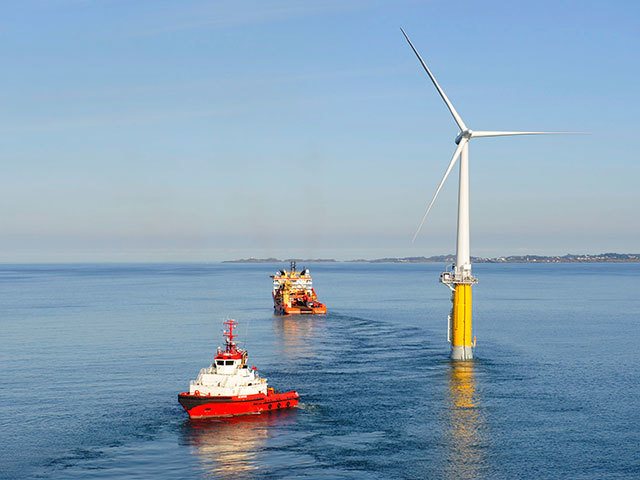
A few months ago I was asked during a television interview what the next five to 10 years could look like for Scottish offshore wind.
I wasn’t expecting the question and, grappling for an answer, said there was a real opportunity for Scotland to capitalise on the floating wind market.
At the time it seemed a reasonable response, given that Equinor’s nine-turbine Hywind Scotland project off the coast of Peterhead had recently reported record generation and the Kincardine Floating Offshore Wind Farm had that week started construction.
But was it a glib answer? What is the real opportunity for floating offshore wind in Scotland?
The Garrad Hassan report announced in 2001 that Scotland has 25% of the overall offshore wind resource capability in Europe – no small figure given the size of the country.
But how much of that percentage could floating wind account for?
John MacAskill, business development and operations director for London-headquartered wind engineering advisers Offshore Wind Consultants, believes the possibilities for a strong floating industry exist in Scotland.
However, much will depend on the level of commitment of government and whether or not they choose to let it become a diverse marketplace.
He also points out that, with many of the shallower North Sea areas already snapped up or marked for development, floating wind will almost become the de facto option for wind developers.
He said: “There is a major risk it will be mainly floating wind going forward because so many areas suitable for fixed turbines may have been removed by Marine Scotland due to demands of other stakeholders.
“But at the moment there isn’t a route to market for the technology. The costs will come down, but we need to see bigger companies coming in and projects of scale to make it competitive.
“The question for the UK Government is: Do they want to just wait or do they want to create a market level that can compete by 2025?”
Equinor is pushing to make the technology commercial while also looking at whether oil and gas assets can be powered by floating wind in Norway.
With offshore wind a growing part of its portfolio, Equinor confirmed last month that it was following the next Scottish North Sea offshore wind leasing round “very closely” for future projects.
While even Equinor concedes that floating wind can’t yet compete with fixed bottom wind, it does believe that the “potential” is there, adding that “in time, it will achieve similar reductions”.
An Equinor spokeswoman said: “The Scottish and UK supply chain has much to offer in the development of advanced technology and innovation.
“For the moment it still needs production support to make projects commercially viable.”
The success of floating technology will almost certainly come down to cost.
If costs are not reduced, floating wind could languish around the fringes of the market for decades.
But of all the countries in the world, Scotland has the greatest chance to realise its sizable offshore wind capability, with Aberdeen considered to be the natural choice of base due to its relationship with the oil and gas sector.
Oil and gas giants Shell and Total recently signalled their interest in North Sea offshore wind development.
Large firms like these would certainly bring down the costs associated with the technology, but many will question whether they can realistically be part of the solution to a problem that many feel they created.
Asked whether the introduction of big oil and gas firms would speed up the growth of floating wind in the North Sea, Mr MacAskill said: “Absolutely, they know this stuff because they have done it, they understand floating structures.
“It’s particularly good for Scotland, because many of these big oil companies have been operating in the North Sea for 30 years. Aberdeen itself has a number of companies that could deploy the technology and skills capability in a very short space of time.”
Recommended for you
